
Twitter: @jono_scoop


March 1, 2023
The United States has had a pilot shortage for over 20 years, with a deficit of roughly 8,000 pilots. Airlines have responded by integrating themselves into existing flight training programs and initiating their own programs. For example, programs like Alaska Airlines’ Ascend Pilot Academy or United Airlines’ partnership with Purdue University focus on launching pilots directly into the commercial industry.
However, 80% of aspiring pilots quit flight training before they receive their license.
According to the AOPA and General Aviation News, poor flight instruction is one of the leading causes. Flight instructors are responsible for managing the aircraft, but also for managing their students’ learning.

The cost of flight training deters pilots even more. According to the Fly8MA flight school, obtaining a commercial license could cost from $28,000 to $90,000 when considering the costs involved with getting a Private Pilot’s License (PPL), an instrument rating, an ATP, and more.
“I had the opportunity to fly; I just never pursued it. I was in high school at the time, and I thought it would be too expensive,” said Chief Pilot Herb Patten.
Despite its costs, a lack of rigorous flight training would compromise the already impaired industry responsible for the safe travel of roughly 178 million people in the United States. Flight instruction is critical, and an instructor’s efficacy is crucial to a student’s success.
Chief Pilot Herb Patten has worked with the San Carlos Flight Center since its inception in 2012. He is an FAA-certified advanced and instrument ground instructor and has logged over 3,000 hours of flight time. The AOPA recognized Patten in their 2021-2022 and 2023 distinguished flight instructor awards and acknowledged the San Carlos Flight Center as a distinguished flight school.
Patten became an instructor in 2018 but was passionate about aviation ever since his teens.
“When I was in high school, I flew with a friend that was a pilot. I thought it was the coolest thing.” Patten said.
Patten enjoyed his exposure to aviation, but his wife helped him realize his passion for it.
“It wasn’t until my wife gave me a gift certificate for a free flight lesson that I started actually getting fired up. I was kind of hooked. I thought: ‘this is what I really want to do,’” Patten said.
So Patten pursued his passion for flight and received a PPL.
“I did my first flight in Jan. 2010, and then I got my first pilot rating, which was a private pilot’s license, in Feb. 2011. It took me a year to do that. I think a lot of people think about how long or how short it takes to get a license, but I was just having a good time,” Patten said.
While on a business trip, Patten took his first informal flight lesson, led by his old boss.
“My boss owned a plane, so he took me out flying the night before a company meeting, and that is when I got my first instructional flight,” Patten said.
After his introduction to flight training, Patten began training at the San Carlos and Palo Alto airports. After a year of training, he worked on his Instrument Rating, which allows pilots to fly in adverse and suboptimal weather conditions. He got his rating in Dec. 2012, roughly two years after getting his PPL.
Patten’s initial flight instructor suggested that he become an FAA Ground Instructor, so in 2014, Patten received a Ground Instructor certificate. He began using it to become involved with the San Carlos Flight Center (SCFC).
“I begged and borrowed and tried to ask Dan, the chief pilot at the time, if I could help out in some way,” Patten said
And after begging SCFC’s Founder and Director of Operations, Dan Dyer, Patten started teaching their ground school in 2014.
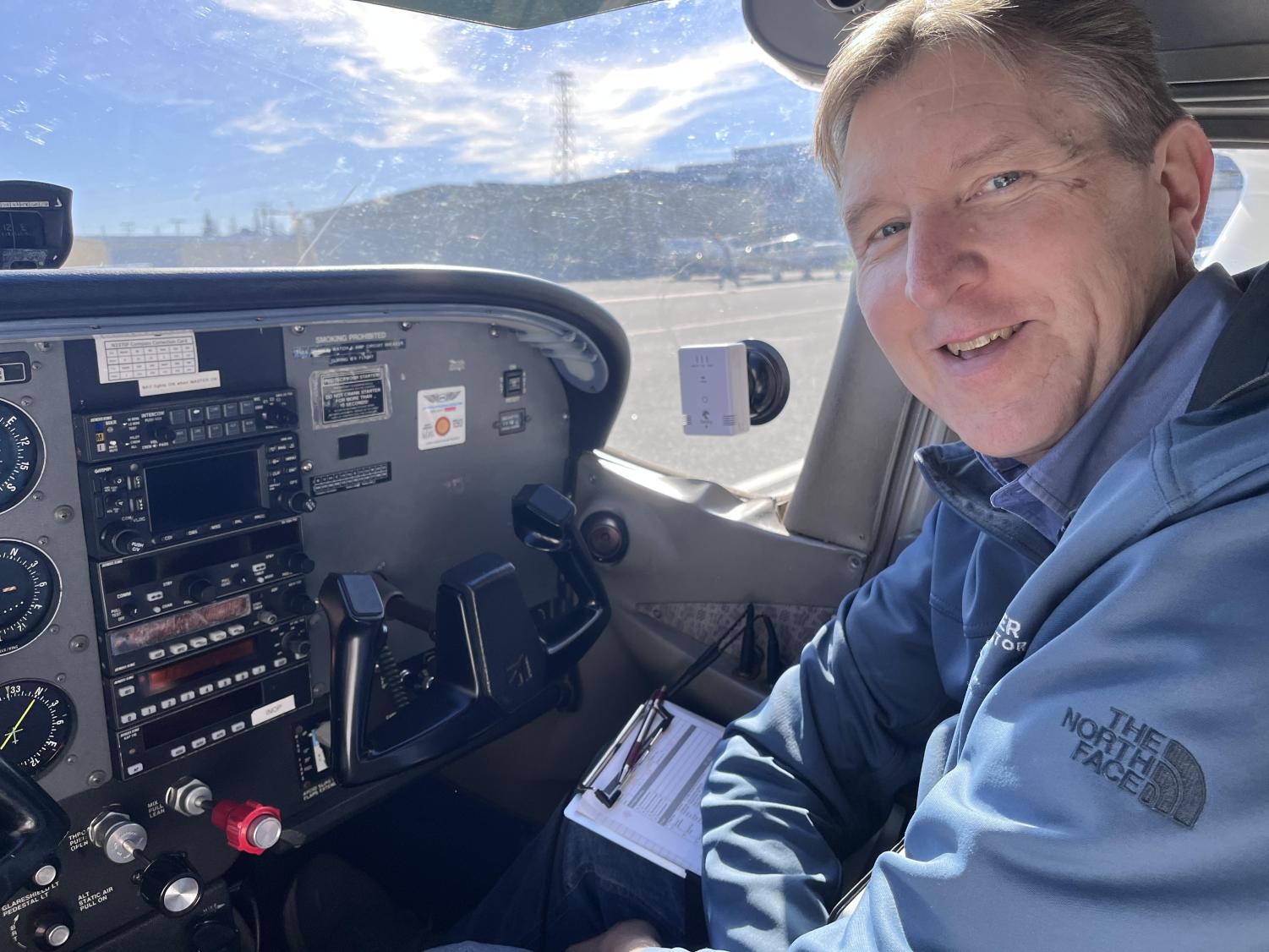
“I had really gotten involved in helping teach things and holding seminars at the San Carlos Flight Center. I really enjoyed it, and I still do it today. I just loved everything about aviation. More importantly, I thought it was fun to share that information with other students who were also interested in it,” Patten said.
Without the support of Dyer, Patten would not have received his role at the flight center.
“Herb used to be a student in my ground school class when I was teaching at another flying club,” said Dyer, “Herb helped to start student activity groups, like the Student & New Pilot Support Group, and then began teaching Sunday morning private pilot ground school classes,” Dyer said.
Dyer started the San Carlos Flight Center in 2012 on the principles of safety, community, and adventure.
“I was teaching as a flight instructor at another flying club, and I saw ways they could improve their instruction and the feel of their club, but they didn’t want to change. So I started my own club/school with all my new ideas,” Dyer said.
Dyer acted as his flight center’s Chief Pilot and co-founded flight clubs, like the Bay Area FlyOutGroup.
“The FlyOutGroup is a social group of pilots that pick fun destination airports and fly there together for fun. Sometimes, just for lunch or dinner, but other times, to see cool air museums, fly over great parts of the country, or learn mountain flying skills,” Dyer said.
He also co-founded the Upwind Foundation in 2013 with Michael Vowles.
“The Upwind Foundation is a non-profit started by SCFC pilots who wanted to give free flight lessons to high school kids,” Dyer said.
Upwind quickly brought Patten into their team. By 2022, the non-profit helped 27 students from Carlmont, Hillsdale, and other high schools become pilots free of charge.
One of those students was Alessandro Franco, who is the new owner of the flight school.
“I did flight training in 2018 through the Upwind Summer Scholarship Program. I’ve been into aviation my whole life, and I applied as soon as I learned about the scholarship opportunity,” said Franco.
Franco is currently on Upwind’s Board of Directors with Patten.
Upwind also helped Carlmont senior Alex Shetty, who received his license and joined the flight center team in August 2022.
“I’ve been at the front desk for about four-ish months. It’s a fun job, and I like talking with the customers and seeing how they are experiencing aviation. I love seeing student solos and stuff like that. The process is really fun. You meet a lot of new people, and when the weather is good, it’s usually a pretty busy job. But it’s a fun job,” Shetty said.
Patten was one of Upwind’s original four founders, along with Dyer, Vowles, and Terry Fiala.
“Patten has been a core contributor ever since. When Upwind was officially incorporated as a non-profit entity, Herb was a founding board member and currently serves as the chairman,” Dyer said.
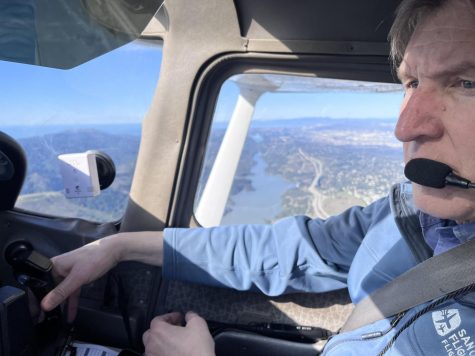
Patten’s involvement with the flight school and extracurriculars was extensive, and he was considering becoming a full-time instructor. However, he had another job. He was a Lead Principal-Technical Architect with AT&T.
“I did work in developing some of the AT&T internal systems for employee productivity. It was a great job. It was a very secure job. It had very good benefits, and it had very good compensation, but honestly, I didn’t really like it. There were even times I would have nightmares about being called in to work.”
Patten wanted to switch his profession, though he worried he was running out of time.
“It just felt like I didn’t have that many more years left to teach because you get older and older,” said Patten.
Commercial pilots have a mandatory retirement age of 65 due to health concerns. Flight instructors have no compulsory retirement age but must pass a Medical Certificate if they wish to work, and according to an Oxford Academic study, a decrease in physical performance is prominent around the 60-79 age range.
Patten was in his 50’s when he addressed these concerns for himself.
“Quitting wasn’t a tough decision, but it was definitely one of those decisions,” Patten said.
Patten ultimately decided to quit his job, and in 2018, he became a full-time flight instructor with the San Carlos Flight Center.
“I transitioned to full-time teaching six months later, and my life is much better because of that.”
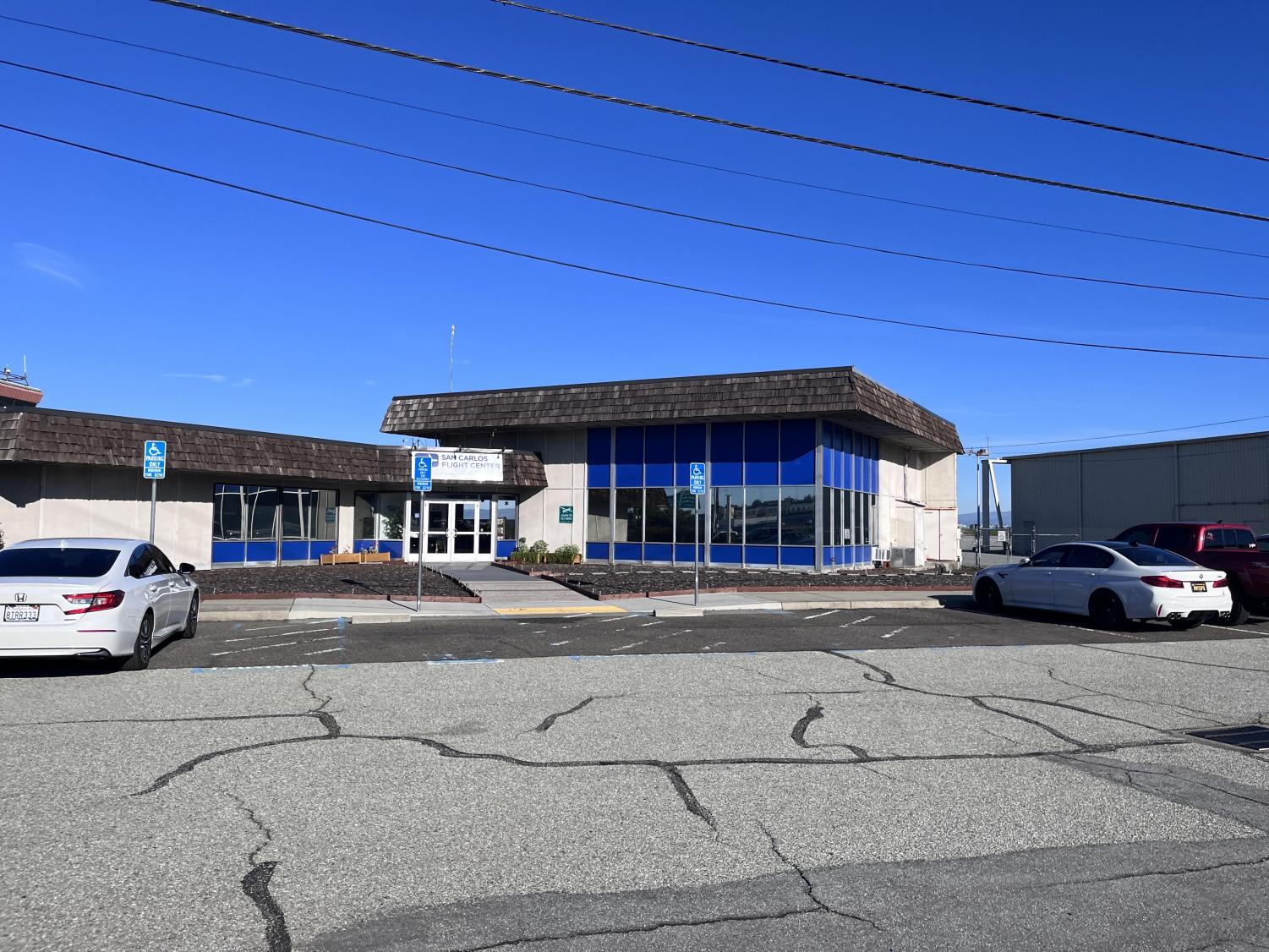
For Patten and Dyer, transitioning from a pilot to a flight instructor wasn’t easy.
“I had to take many notes after each student’s lesson because I found myself forgetting everything as soon as the next lesson began,” Dyer said.
Patten could track his students’ progress, but finding a method to teach them correctly proved difficult.
“I think the biggest challenge was just understanding that I needed to let go of the plane so that the student could really learn. I think that’s always a hard thing to do. I learned in flight school how to do maneuvers, but they don’t teach you a little bit of the psychology you need to know to handle students,” Patten said.
Leaving the controls to students allows them to learn by doing, with the flight instructor guiding them. Although some topics are more challenging to teach than others; take the concept of risk management.
“Risk management would probably be the hardest to teach. To teach students to be able to make good decisions. It’s hard to teach that,” Patten said.
“The concept of risk and how to define it is probably one of the world’s most subjective subjects,” according to Davisson B in an AOPA Risk Management article.
Making learning conducive for each student, especially with more abstract concepts like risk management, is essential. To accomplish this, instructors must set up the proper environment for students to independently realize what they need to do.
“We can say, hey, these are the rules and regulations. But to learn the skills, you can set up an environment where they teach themselves,” Patten said.
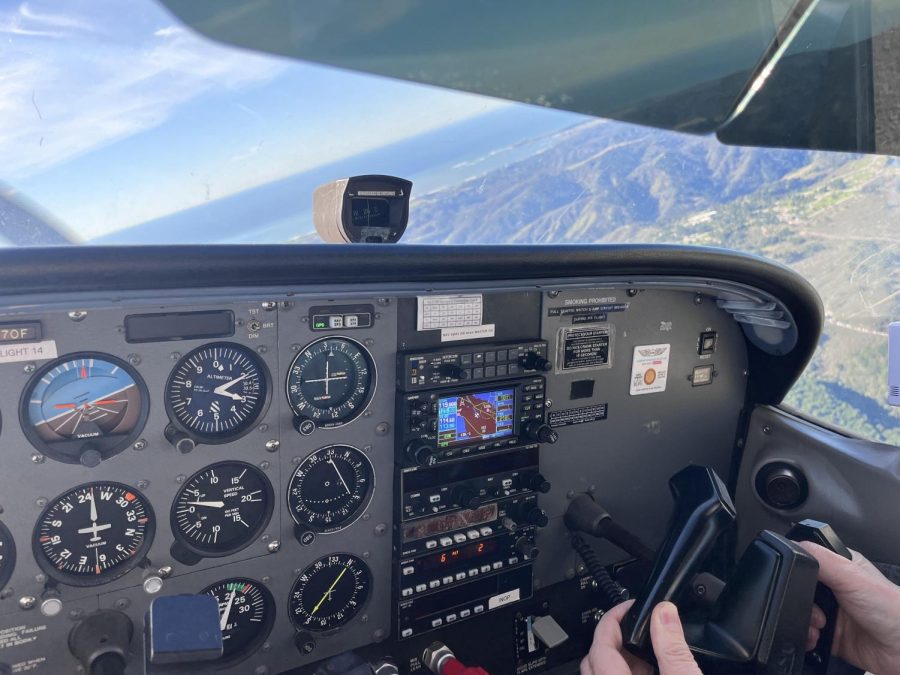
For instructors, knowing how to teach is as important as knowing how to fly.
“The ability to explain complex topics is important. Knowing the most effective path to learn flying skills is crucial. And a positive attitude to help people accomplish their goals is necessary,” Dyer said.
Like Dyer, Shetty believes that the relationship and rapport between an instructor and a student is valuable.
“An instructor’s willingness to answer your questions and their ability to make themselves available makes them valuable when you learn to fly. When they are not really willing to answer those tricky questions, it makes flying a lot harder. There is a lot less trust there. I prefer a kind of trustworthy and open person,” Shetty said.
Flight school is a challenge, and the ability of an instructor to aid their student is vital in supporting their student’s experience.
“Flight training was relatively difficult for me because the students are responsible for a lot of new information. Understanding how the aircraft works and how you navigate airspace around you is tricky,” Shetty said.
“I think landing was a pretty tricky part of flight training because when you’re being taught to fly, the ground is where you’re supposed to stay away from,” Shetty said.
Students are not simply taught how to land. Rather, flight instructors aim to teach students by building their experience, as mentioned before. Patten applies this logic when conducting landings, stalls, and other maneuvers with students.
On average, Patten handled 2-3 students a day.
“I tended not to do more than that because I just feel like it’s just too much work; I really want to give quality versus quantity,” Patten said.
When handling students, Patten’s job would begin long before the lesson.
“I get up every morning to check the weather to see what’s going on. I review my notes from previous lessons and the activity for the students when they come in. Then on most days, I would do a certain amount of ground instruction with a student.”
While flying with students, Patten began to notice patterns of mistakes.
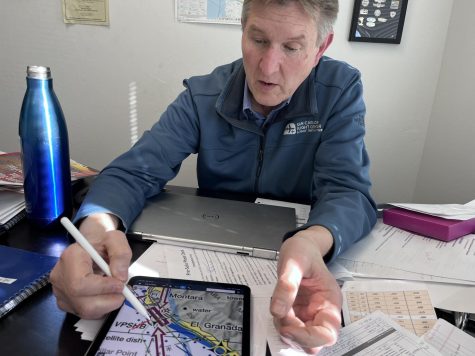
“I think many times I’ve seen a combination where students may just kind of overcontrol the plane rather than just let the plane fly by itself. And I think the other aspect is that sometimes students just don’t yet quite perceive what the plane is doing.”
Many students are used to driving, and adjusting them to a plane’s flight controls takes effort.
“I think the hardest thing to teach is that the hands don’t do the same thing in a plane that they do in a car: the feet now control the rudder, which controls yaw. It’s a new skill that is hard for people to learn,” Patten said.
To get his students accustomed to the new controls, Patten creates learning situations for his students.
“We set up the experiments for the students to learn. By going through that exercise, that skill, then the student usually teaches themself. We take students, go up to altitude, and we start having them observe what the plane is doing, and they realize that to make the plane fly correctly, they need to be using their feet as much or, in some cases, more than their hands,” Patten said.
As Patten puts it, he sets up a laboratory, considering things as extensive as the order in which he teaches.
“Order definitely matters; one skill will build onto another skill. We always say that our syllabus is very structured and built upon one another,” Patten said.
Flight instructors like Patten go through this process, all with the common goal of preparing their students for their check rides.
“There’s a lot of pressure on the instructor to ensure the student is prepared well, and often we over-prepare the student. It’s a gratifying feeling when at the end of the day, after their tests, the examiner says to the students, congratulations. You’re a pilot,” said Patten.
He has helped about a dozen students through training.
“Mostly private, some commercial, some instrument, and some instrument flight instructor students,” Patten said.
And outside of instructing, Patten would host events and learn from Dyer.
“Sometimes, I would do safety seminars. I would help if I could, you know, update our curriculum or exercises. I think I spent a lot of time with Dyer and just soaked up as much information as possible from him,” said Patten.
“Herb often created and presented seminars as part of our FAA Safety Seminar. He regularly volunteered to make the Flight Center a more social and educational place,” Dyer said.
Because Patten volunteered so much at the flight center, he became an Assistant Chief Pilot, part of the Chief Pilot Office. But around 2020, Dyer faced medical issues.
“I was no longer healthy enough to be a pilot. I still enjoy flying, but I can’t be the Pilot-in-Command. Instead, I fly with my friends,” Dyer said.
“He could no longer be a pilot. He decided to phase out (of the Flight Center), so we sold the business to Franco,” said Patten.
Franco took over after Dyer retired and is the current owner.
“When Dyer retired and moved out of the area, I bought the business from him so that the SCFC could be able to continue our high level of flight instruction,” Franco said.
In need of a new chief pilot, the flight center offered the job to Patten, who had been an assistant chief pilot for a year.
“It wasn’t necessarily something that I wanted to be. I’d prefer to be the person in the background, you know, helping things out and doing the work, whereas a chief pilot seems like I have to be more of a leader, managing the flight instructors. But I think I pretty much did it because I had so much interest in making sure that the flight center continued.”
So Patten accepted, and his job pivoted from managing students to managing instructors.
“There’s less one-on-one teaching. I spend probably like 30 or 40% of my time continuing to improve our training material. And the other aspect of it is trying to, you know, hire and train new instructors.”
Though Patten still flies with students. He is the last person student pilots fly with before they complete their solo flight.
“So in the average day as a chief pilot, I might have one flight a day, or perhaps two flights a day. And then the rest of the time is kind of like working on course material.”
Patten has been San Carlos Flight Center’s Chief Pilot since Sep. 2020 and has experienced a lot in his time flying. But he has rarely encountered an unsafe or life-threatening situation.
“The closest scary experience I had was when I was flying with another student that already had a pilot certificate. We were operating at, you know, some high-elevation airports (in a Cessna), where the performance is not good.”
Patten is talking about high-density altitude, a state which harms a propeller’s grip on the surrounding air and creates a smaller upward force on a plane’s airfoils, decreasing the aircraft’s performance. This causes longer takeoff and landing rolls.
“The pilot was approaching the airport faster than normal. So I was giving some suggestions like: ‘let’s try to get the plane configured and slowed up to an approach speed.’ But that was a little late. On landing, we started to veer off the runway.”
So the pilot decided the landing was unsafe and executed a go-around.
“The pilot observed that things weren’t going the way they should be going, and instead of trying to salvage the situation, the best thing the pilot did was go around. In other words, execute the maneuver to bring the plane away from the dangerous situation, climb back up, and then attempt to land again, this time in a more stable situation,” Patten said.
All pilots make mistakes, and correcting them is a crucial skill.
“It’s really more important to make sure that everything is safe, and if it doesn’t look good to you, know to go around early rather than keep your approach going,” Patten said.
While training books like the PHAK mention how to execute procedures like go-arounds, flight instructors reinforce these processes through practice. A flight instructor’s impact on a student’s career is monumental for this reason, and it is the instructor’s priority to know what and how to teach to keep students knowledgeable and safe.
Flight instructors are also vital in ensuring the function of the commercial industry. Commercial pilots require 1,500 hours to obtain their ATP, and additional hours for simulator training, type ratings, and other training. More importantly, instructing is pivotal to developing excellent safety within the aviation industry.
“Aviation instructors are on the front line of efforts to improve the safety record of the aviation industry. Safety, one of the most fundamental considerations in aviation training, is paramount,” says the FAA’s Aviation Instructor’s Handbook.
But despite its high demands, instructing is an enjoyable job and a valuable career.
